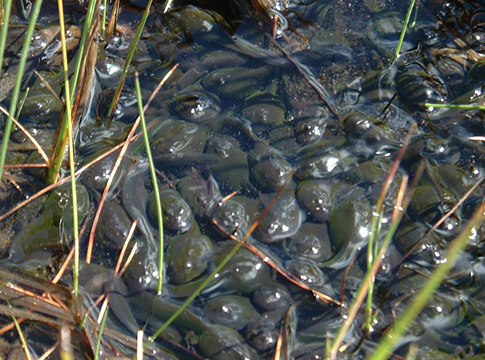Genetic diversity can “rescue” amphibians from a deadly pathogen
02-02-2018

Genetic diversity can “rescue” amphibians from a deadly pathogen
Amphibians worldwide are facing the threat of novel infectious diseases. When a pathogen is introduced into a wild population, it can result in extinction. However, some amphibian populations may be able to rapidly evolve in response to a pathogen and prevent extinction. In a recent study published in Evolutionary Applications, Profs. Mark Christie and Catherine Searle used a modeling approach to understand how amphibian populations might evolve in response to the introduction of a deadly fungal pathogen (Batrachochytrium dendrobatidis). They found that amphibian populations with high genetic diversity and large populations were able to evolve in response to the pathogen, decreasing the chances of population extinction. Their study suggests that populations with these characteristics should be prioritized for conservation when species are threatened by novel infectious diseases.
Read more: Christie, M.R. & Searle, C.L. (online early). Evolutionary rescue in a host-pathogen system results in coexistence not clearance. Evolutionary Applications, DOI: 10.1111/eva.12568.